Check out 10 bird species you’ll likely catch at your Illinois feeder in late summer, fall
While spring migration is celebrated as a great time to spot colorful birds, there are also plenty of unique songbirds and other species you can see in the late summer and fall in southwest Illinois and nearby.
Those looking to enter the St. Louis-area birding scene might consider visiting the Audubon Center at Riverlands, which offers paved trails to bird-watch, as well as avenues to get involved in conservation, such as the trumpeter swan watch.
The Audubon Center at Riverlands is uniquely positioned to welcome birds from all across the country, director Ken Buchholz told the News-Democrat.
“Our center, we are in this really remarkable place on the Mississippi River. Really at the heart of what’s called the Mississippi Flyway, and really close to the Mississippi River’s confluence with the Missouri River,” Buchholz said.
One reason it’s important for people to get into birding and promote conservation is the staggering net population loss in birds, Buchholz continued. A 2019 Cornell University study found the bird population in North America has declined by 2.9 billion breeding adults since 1970, with 1 billion of the losses taking place in forests alone.
Even if you don’t have the time to visit the center in West Alton, there’s plenty to see in your backyard or at your local park.
“Backyard birds are a great place to start birding, because you can see them and a lot of times you don’t need optics like binoculars or a scope to see them and identify them,” Buchholz said. “Just in your backyard alone, if you’re watching you can probably identify over the course of a year 20 to 30 species.”
Birding experts Buchholz and Tara Hohman, conservation science manager at the Audubon Center at Riverlands, recommended several fan favorite species to look out for around your bird feeder this August and into autumn.
Here are 10 species to spot in southwest Illinois.
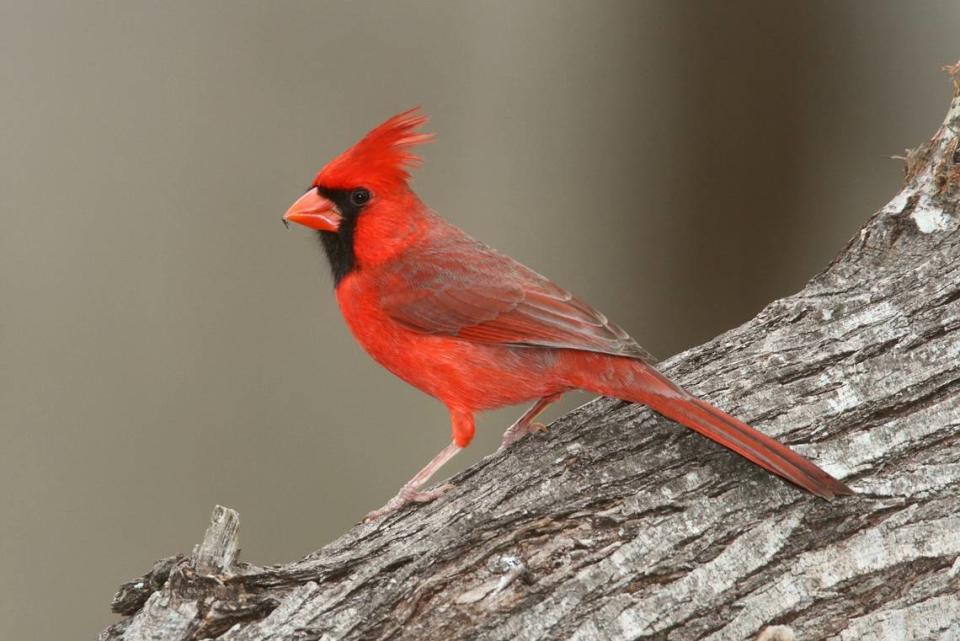
Cardinals
This species is “perhaps responsible for getting more people to open up a field guide than any other bird,” according to All About Birds, a project of The Cornell Lab of Ornithology, and it may be even more popular in the metro-east as the mascot of St. Louis’ Major League Baseball team.
Cardinals are often found in open woodlands, All About Birds says, and while they’re not overly picky when it comes to feeding, they may have an affinity for sunflower seeds.
The northern cardinal is Illinois’ state bird and is also the designated bird for several other states. The male cardinal boasts the red feathers the species is known for, while the female is more yellow-ish brown with a red beak.
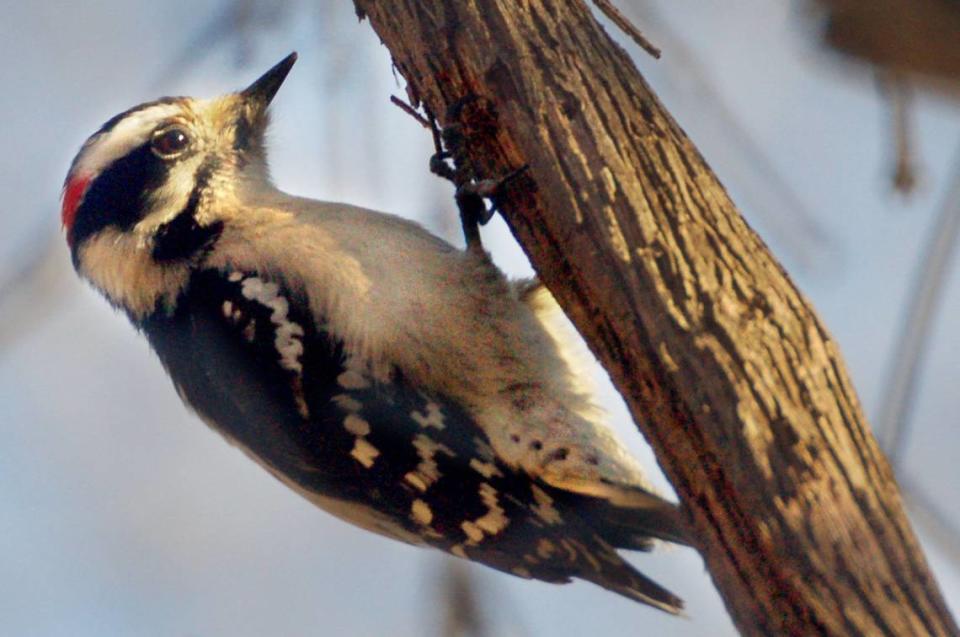
Downy woodpeckers
The downy woodpecker shows off black and white striping, and the male has a brilliant red spot on his head. The common species is the smallest woodpecker in North America, the National Audubon Society reports.
These tiny birds find their lunch by foraging for insects, along with seeds and berries. They will eat suet at bird feeders, according to the National Audubon Society.
A typical downy woodpecker weighs just 0.7 ounces to 1 ounce, All About Birds says, with an average wingspan between 9.8 and 11.8 inches.
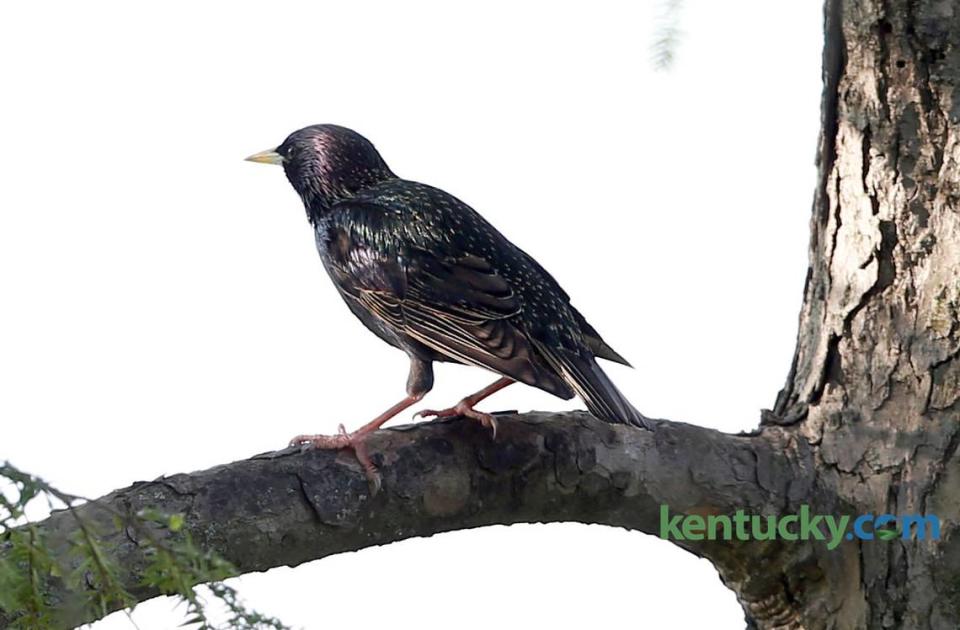
European starlings
The European starling may not necessarily be considered a fan favorite, but it is a likely visitor to your Illinois bird feeder. The “aggressive” bird is considered a pest by the Illinois Department of Natural Resources because it can carry diseases, damage buildings and crops and competes with native species for nest sites and food, the IDNR says.
Although it isn’t native to the Land of Lincoln, the European starling is “permanent” and “common” across the state, according to the state agency. The species “undoubtedly has had a negative impact” on bluebirds and red-headed woodpeckers, the National Audubon Society reports.
The European starling is dark-colored in the summer and has white spots in the winter. They’re attracted to fruit, hulled sunflower seeds, oats, cracked corn and more.
American goldfinches
The American goldfinch is often found in backyards and is particularly drawn to feeders in the winter, according to All About Birds. To invite them, you might set out black oil sunflower seeds, nyjer or hulled sunflower seeds, Cornell’s Project FeederWatch recommends.
As their name suggests, the male goldfinch is bright yellow. Female goldfinches may also be yellow, depending on their age and whether it’s breeding season. The average American goldfinch weighs 0.4 to 0.7 ounces and has a wingspan from 7.5 to 8.7 inches, All About Birds reports.
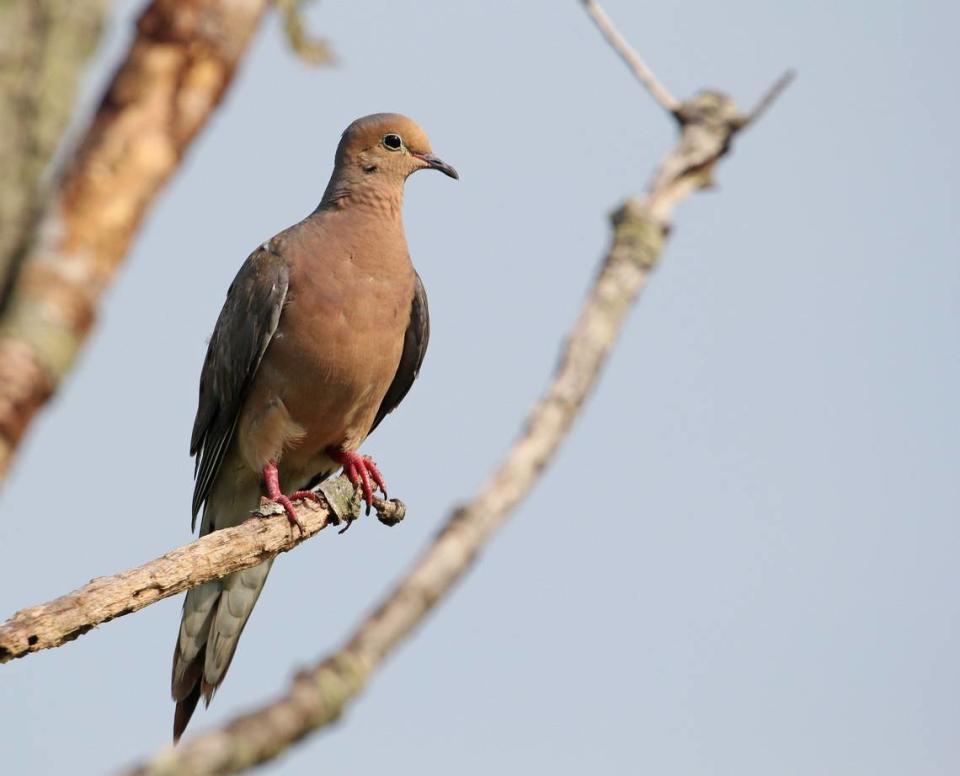
Mourning doves
The mourning dove gets its name from its long, soft calls that sound like laments, according to All About Birds. The bird is the most hunted species in North America, All About Birds continues.
These birds may eat from the bottom of your feeder and generally spend much of their time on the ground.
To increase the chances of befriending a mourning dove, consider filling your feeder with safflower, cracked corn, peanut hearts, millet, hulled sunflower seeds, oats, nyjer, milo or black oil sunflower seeds. Seeds make up 99% of the mourning dove’s diet, the National Audubon Society reports.
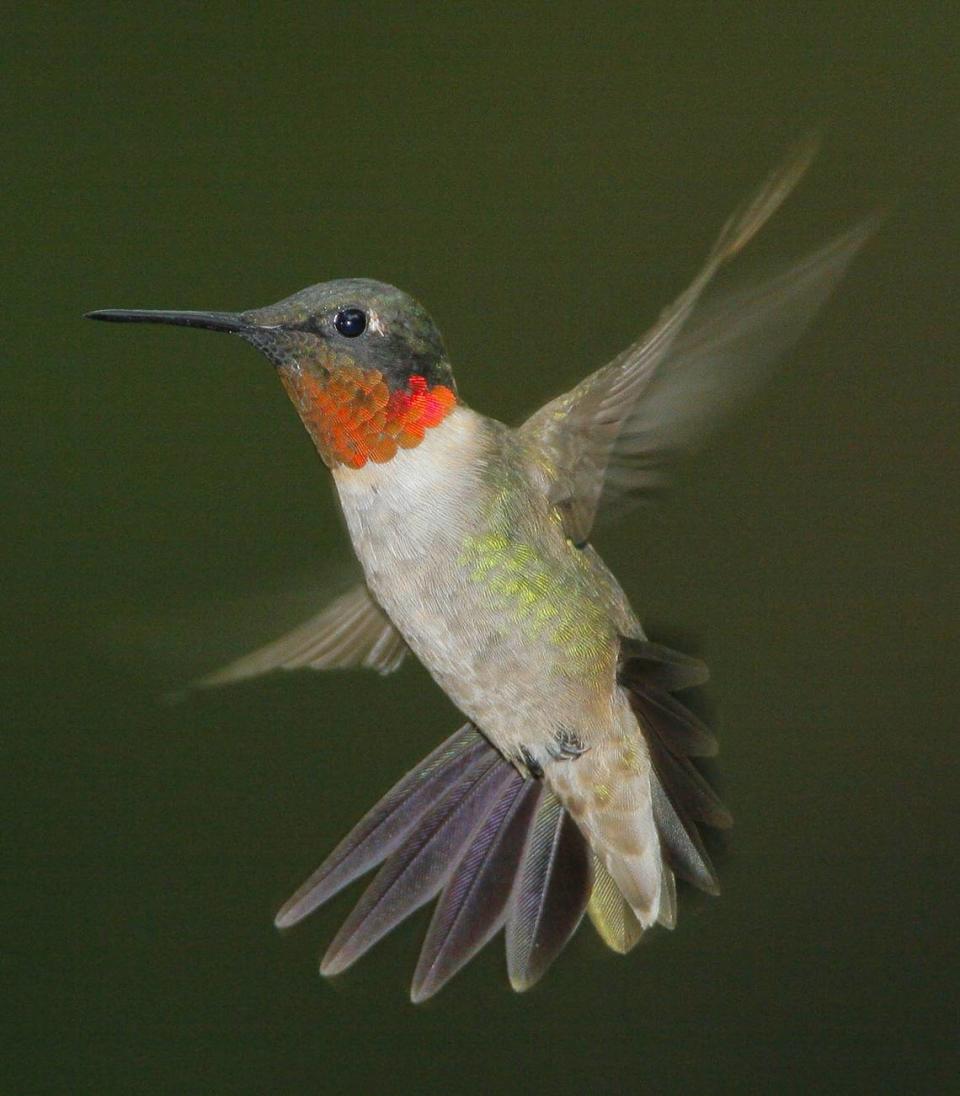
Ruby-throated hummingbird
The ruby-throated hummingbird is a frequent visitor to nectar feeders in Illinois. Like other hummingbirds, the species is tiny, with most topping out at 0.2 ounces. Their bodies are dark green with a goldish tint, and they’re often found near parks, as well as in backyards.
Along with sugar water, ruby-throated hummingbirds eat small insects out of the air and from spiderwebs.
Many ruby-throated hummingbirds have been spotted in the St. Louis region this year, and you can report any you see online at Hummingbird Central, which tracks the creatures.
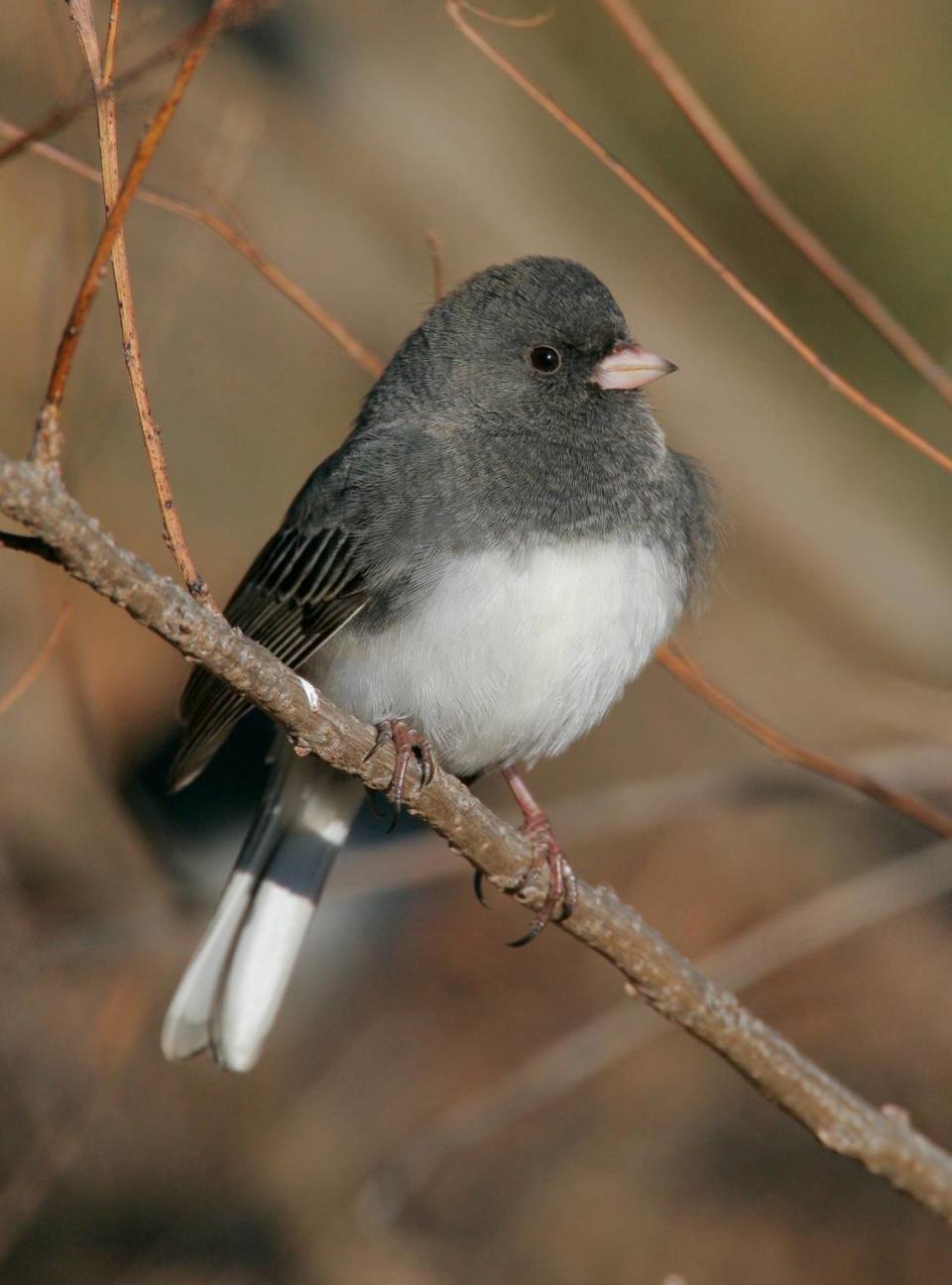
Dark-eyed juncos
The dark-eyed junco has a varied appearance, depending on the bird’s sex, subspecies and maturity level. But unsurprisingly, you can count on dark, beady eyes as an identification characteristic.
The oldest recorded dark-eyed junco lived to 11 years, according to All About Birds. The bird is often found walking in open areas with some trees.
Similarly to mourning doves, the recommended food offerings for dark-eyed juncos include safflower, cracked corn, peanut hearts, millet, hulled sunflower seeds, oats, nyjer, milo and black oil sunflower seeds.
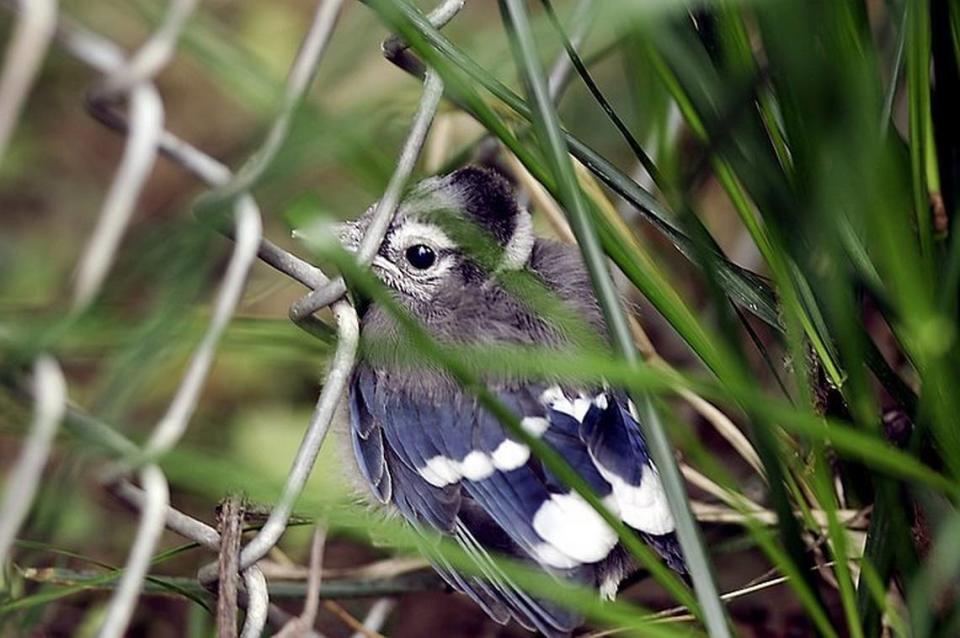
Bluejays
“One of the loudest and most colorful birds” you may see in your Illinois backyard is the iconic bluejay. The species can be found year-round in the Land of Lincoln, and planting oak trees can help sustain its population, according to All About Birds.
To attract bluejays to your yard, keep in mind they prefer “tray feeders or hopper feeders on a post rather than hanging feeders, and they prefer peanuts, sunflower seeds, and suet,” All About Birds advises. Another way to be hospitable to bluejays is to install a birdbath.
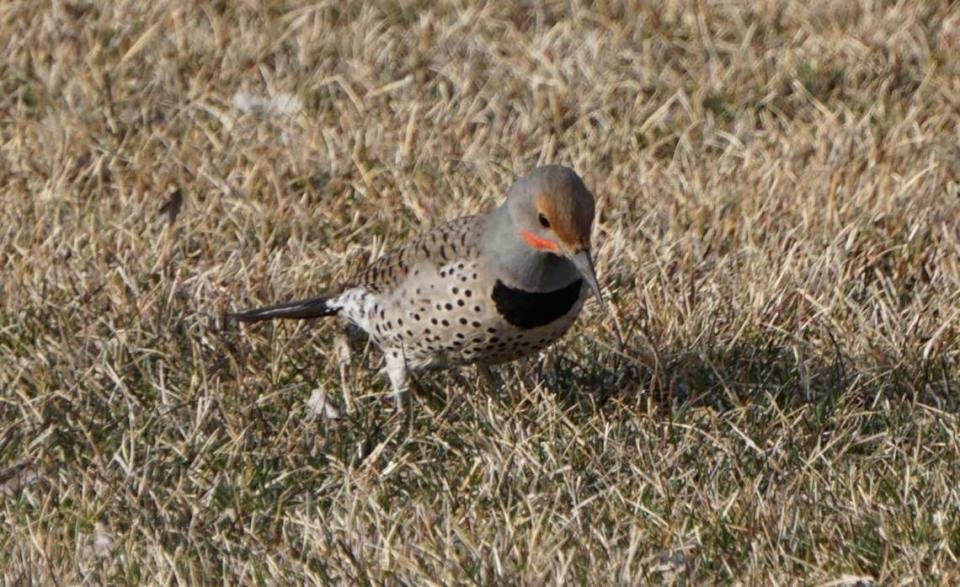
Northern flickers
Northern flickers have an almost funky design, with spotting across their bodies paired with yellow or red wings and more red on the face or head.
They have a “gentle expression,” All About Birds says, and while northern flickers aren’t frequent diners at bird feeders, you may find them in your backyard or at birdbaths.
Project FeederWatch recommends setting up a suet cage, large hopper or platform feeder for northern flickers, who prefer to eat safflower, cracked corn, peanut hearts, millet, hulled sunflower seeds, suet, peanuts and black oil sunflower seeds.
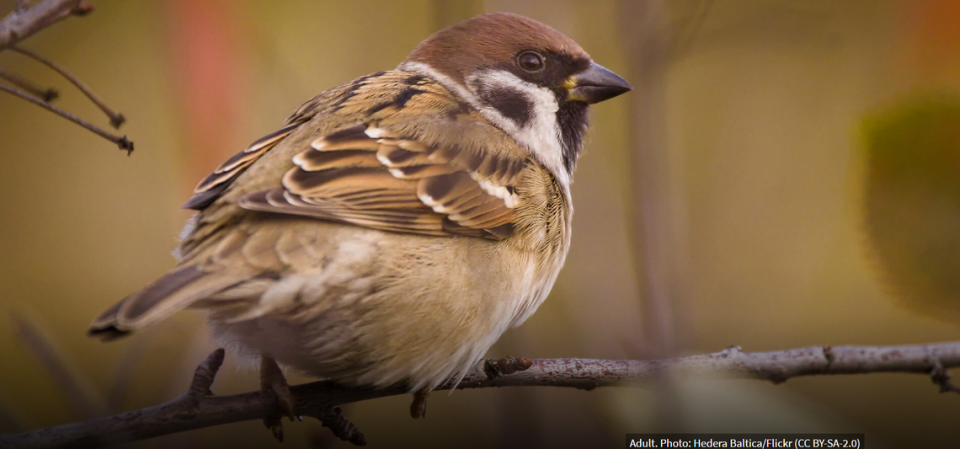
Eurasian tree sparrows
Eurasian tree sparrows got their American start in St. Louis when 12 to 20 of them were released in the region in 1870. The species never became truly widespread across the country, and is primarily found in the metro-east and St. Louis, as well as in southeastern Iowa.
The Eurasian tree sparrow is a roundish bird with black, brown and white coloring and a light brown chest.
More on birding in the metro-east
As the temperatures cool heading into late September and even into the winter, bird feeders provide important resources, as well as great viewing opportunities, Hohman said.
“When it comes to seeds that you want to put out, anything that’s high-fat, so black oil sunflower seeds are a favorite among a ton of species,” Hohman added.
In addition to setting up a feeder, planting specific species in your yard can also encourage visitors to fly by.
“The other really simple thing that brings a lot of joy beyond just bringing birds to your backyard is using native plants,” Buchholz said. “They use less water, they offer more variety of color and [last] longer, and they’re actually food sources for birds.”
If you find your yard has inadvertently become hospitable to predators such as hawks, you can put away your seed for a few days and wait for the hawk to move on before setting back up for the smaller birds.
It’s ideal to set up your feeder within 10 feet of a window, Hohman said, and be sure to clean it regularly to do your part in avoiding disease spread.

